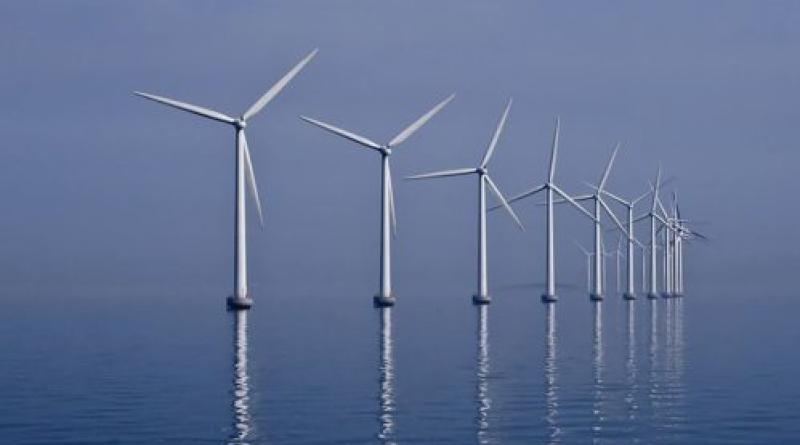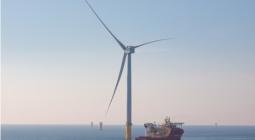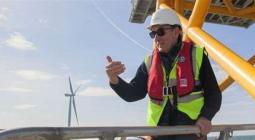Report Spotlights ‘Game-Changing’ Offshore Wind Potential in Canada as U.S. Projects Flail

The offshore wind industry in the U.S. is running into severe headwinds due to rising construction costs and supply chain issues, just as a new report digs into Eastern Canada’s potential to capitalize on the technology.
Atlantic Canada can become an “energy superpower” by doubling down on offshore wind development, states a recent Public Policy Forum (PPF) report, with relatively shallow waters and a maritime legacy that make it an ideal location for such projects.
“The wind blows strong, consistently and there are areas offshore where it is very feasible to install very large numbers of wind turbines,” said report author Peter Nicholson, chair of the Canadian Climate Institute’s board of directors. “There really aren’t many other places in Canada where that opportunity exists.”
The global energy transition presents a “once-in-a-lifetime” economic opportunity for the region, the report notes, one that can also help Canada meet its greenhouse gas reduction targets.
But south of the Canadian border, stakeholders with similar optimism for offshore wind projects have recently learned some “harsh lessons,” reports The New York Times.
Weeks after the PPF heralded the “game-changing” potential for Eastern Canada, Danish offshore wind developer Ørsted announced it was cancelling two projects in New Jersey, potentially writing off as much as US$5.6 billion in the bargain. “High inflation and soaring interest rates are making planned projects that looked like winners several years ago no longer profitable,” writes the Times, explaining what went wrong.
“The world has in many ways—from a macroeconomic and industry point of view—turned upside down,” Ørsted’s CEO Mads Nipper said on a call with reporters. In such conditions, the only sensible thing “is to draw a line in the sand.”
Ørsted’s announcement follows other signs the industry is going through a difficult moment. The future of four other East Coast U.S. projects, which would have provided electricity to New York City, is in question after they were denied subsidy increases. And shares in Munich-based Siemens Energy fell dramatically after it was revealed that the company sought a bailout from Germany after its wind turbine arm, Siemens Gamesa, struggled with rising costs and technical problems, reports the Guardian.
Before recently struggling with construction costs and interest rates, offshore wind was one of the fastest growing energy sectors. In fact, supply chain issues mounted as wind developers in the U.S. and Europe pursued too many projects for the resources and transportation available, the Washington Post notes.
BP’s head of gas and low carbon Anja-Isabel Dotzenrath said permitting problems, like long lag times between power purchase agreements and project construction, and a lack of inflationary adjustment mechanisms, have added to industry’s woes. “Offshore wind in the U.S. is fundamentally broken,” Dotzenrath said.
While the industry’s problems spell short-term trouble for the clean energy transition, they also have political implications, with wind power an elemental component of decarbonization goals in many states. Ørsted’s cancelled Ocean 1 and 2 projects were central to New Jersey’s emissions targets, for instance. And U.S. President Joe Biden’s clean energy targets call for 30 gigawatts of offshore wind nation-wide by 2030. His political adversaries are now using the industry’s issues to frame the transition as unattainable, the Times says.
The White House maintains it is “on track” to meet targets after approving the country’s largest-ever offshore wind project off the coast of Virginia, adding that other projects in New York prove the transition is still under way. Another Ørsted project, the Revolution Wind Farm, is also moving forward to deliver power to Rhode Island and Connecticut.
“While macroeconomic headwinds are creating challenges for some projects, momentum remains on the side of an expanding U.S. offshore wind industry—creating good-paying union jobs in manufacturing, shipbuilding, and construction; strengthening the power grid; and providing new clean energy resources for American families and businesses,” White House spokesperson Michael Kikukawa said in a statement.
The Public Policy Forum report for Atlantic Canada also points to “solid momentum” moving the offshore wind industry forward, with global production due to climb 45 gigawatts per year until 2030. It does acknowledge that the rising cost of inflation has hampered the industry and stalled projects, producing enough turmoil that Biden’s target “is likely to slip.”
The report recommends ambitious policy and regulatory support to help Canadian developers overcome the high up-front costs, including fiscal incentives, enabling Atlantic Canada to capitalize on offshore wind.
But other challenges persist. Environmentalists have called into question the overall impact of such massive developments. And Nova Scotia’s recent decision to abandon the Atlantic Loop, which would have connected the Atlantic provinces to hydropower from Quebec, means the larger region would be unable to fully benefit from offshore wind.
The report described the Atlantic Loop as an “essential first step” for the Atlantic to export wind energy to the rest of the country, and even called for the massive megaproject to be augmented.
Some critics maintain there just isn’t enough market for offshore wind energy. “The issue that we have is that Nova Scotia doesn’t have demand, locally, for many gigawatts of offshore wind, so everyone is looking to either hydrogen pathways or else trying to get electricity to the U.S.,” Scott Urquhart, CEO and founder of Danish software company Aegir Insights, told CBC News.






